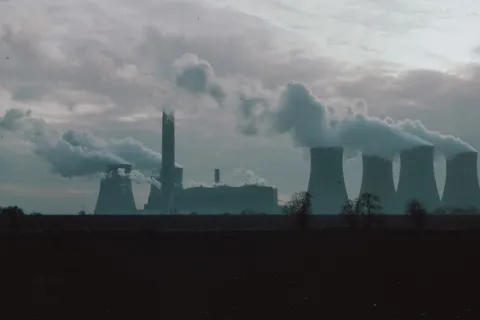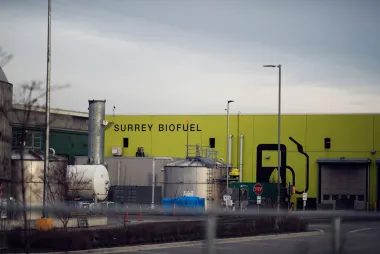COP26: Strong carbon-trading rules could help the world avoid dangerous levels of global warming

The following article is republished from The Conversation under a Creative Commons license. It was authored by Citlali Cruz, Graduate Research Assistant, Public Policy and Global Affairs School, University of British Columbia, and John Steen, EY Distinguished Scholar in Global Mining Futures, University of British Columbia.
Despite recent reports of government decisions to shutter coal-fired power plants in Canada, the United States and the European Union, coal remains the source of almost 40 per cent of the world’s electricity. In the past two decades, the capacity for coal-powered electricity has doubled to about 2,050 gigawatts, with another 247 gigawatts in planning or under development in China alone.
President Xi Jinping said in late September that China would stop building coal-burning power plants overseas, but China, India, South Africa and Turkey remain large consumers of thermal coal, the largest source of carbon dioxide emissions. To meet the 1.5 degrees Celsius limit on global warming, thermal coal use would need to drop by about 80 per cent by 2030.
With the United Nations-led climate talks in Glasgow (COP26) here, there’s a way for governments to work with industry. One paragraph in the Paris Agreement lays the groundwork for an international emissions-trading system that could bring an end to the production of coal-fired electricity.
How would it work?
Emissions-trading mechanisms have gained popularity since they were established in 1997 in the Kyoto Protocol. They give incentives to participants to find innovative ways to reduce their carbon dioxide emissions and offer the option to trade excess carbon with other countries.
The success of international carbon trading has been mixed due to issues such as oversupply and a lack of accounting rules. The Paris Agreement seems to have a solution for this problem, as countries agreed to reduce their national emissions by setting climate targets, known as Nationally Determined Contribution (NDC).
Article 6.2 of the Paris Agreement says that countries can use “internationally transferred mitigation outcomes” (ITMOs) — traded emission reductions generated by one party — towards the nationally determined contributions of the acquiring party. This means two countries could collaborate to reduce global carbon emissions and meet their NDCs.
For example, countries A and B could create an agreement that makes it easier for country A to switch from coal-powered electricity to the cleaner sources that are produced by country B. Not only does country A reduce its emissions, allowing it to meet its NDCs, but the agreement also leaves country A with ITMOs to sell, which country B could then purchase.
Could Canada benefit?
Canada aims to reduce its emissions to 40 per cent, relative to 2005 levels, by 2030. Based on the 2020 National Inventory Report, however, Canada will miss its mark.
Canada’s oil and gas sectors would have to drastically reduce their emissions for the country to have any chance of meeting its NDC targets. Given Canada’s ambitious commitments, the use of ITMOs gives Canada a viable opportunity to achieve its targets through international co-operation.
For instance, natural gas consumption continues to grow in emerging economies. China, for example, has committed to increasing its natural gas consumption by 15 per cent in 2030 and switching to gas in industry and buildings. China currently relies on imports to cover about half of its domestic consumption. Given its recent energy crisis, China is set to become even more reliant on external sources of energy including natural gas to meet its basic energy needs.
Natural gas production in Canada will increase around 20 per cent over the next 20 years, while domestic consumption is predicted to decline. This leaves opportunity for considerable growth in liquefied natural gas (LNG) exports.
A bilateral agreement between China and Canada, for example, could allow Canada to export LNG to China to displace coal use. This would allow China to achieve its NDC targets.
Writing the rule book
The rules are still a work in progress. The rule book for emission reductions is expected to be completed at the UN-led climate talks in Glasgow in November.
In the meantime, pilot projects and other initiatives — in a variety of industries, from waste management to transportation — have emerged worldwide to show how an ITMO transfer would function in practice. For example, the Canada-Chile Program provides technical innovation to reduce emissions in the waste management sector and a system for tracking, monitoring and reporting emission reductions.
Many questions regarding the benefits of the transfer of carbon reductions remain, including whether governments should support transfers between companies.
The rules should guarantee “environmental integrity.” This means that any ITMO exchange should make sure there have been environmental gains — that the reduction in greenhouse gases would not have occurred without the transaction — and that it does not lead to more greenhouse gas emissions.
The accounting and quality of emissions, how they are transferred and the lasting mitigation effects may help address environmental integrity. The rule book writers must also define how emissions are reported and create transparent registries to make sure emissions reductions are not counted twice.
Some see Article 6.2 as a way to fail, as it has good ideas but unclear rules. There should be clear incentives for countries to set ambitious targets without compromising competitiveness.
What are the next steps?
The negotiations at COP26 will be critical for governments to revise and co-operate to work towards their targets. The latest Intergovernmental Panel on Climate Change (IPCC) report calls for urgent global climate action, and ITMOs provide a promising opportunity that allows countries to collaborate to achieve their climate targets.
Industry and government must partner to create models that incentivize the creation of carbon trading mechanisms to transfer ITMOs, while also creating economic and environmental benefits. Corsia, a market mechanism developed by the UN International Civil Aviation Organization, is leading the way. It seeks to make all growth in international flights after 2020 carbon neutral. Up to today, Corsia has 81 participant countries that account for 75 per cent of emissions in the international aviation industry.
For Canada, where 2030 climate targets are rapidly approaching, it is essential for the government to leverage ITMOs to work together with industries and collaborate on solutions that support a future transition with cleaner energies. Setting short-term and long-term goals that include the transfer of ITMOs particularly in the oil and gas industry and to collaborate on solutions that support a future transition with cleaner energies will be vital for Canada to achieve its climate goals.
Yukinori Kinoshita, an undergraduate student in international economics at the University of British Columbia, co-authored this article.
Feature image by Annie Spratt on Unsplash


